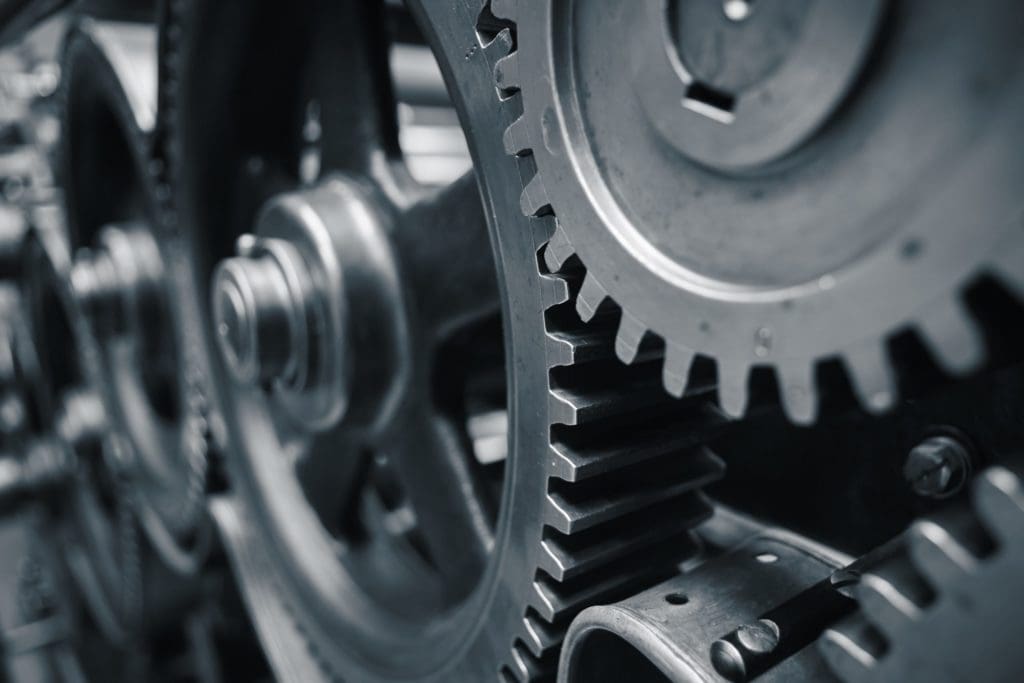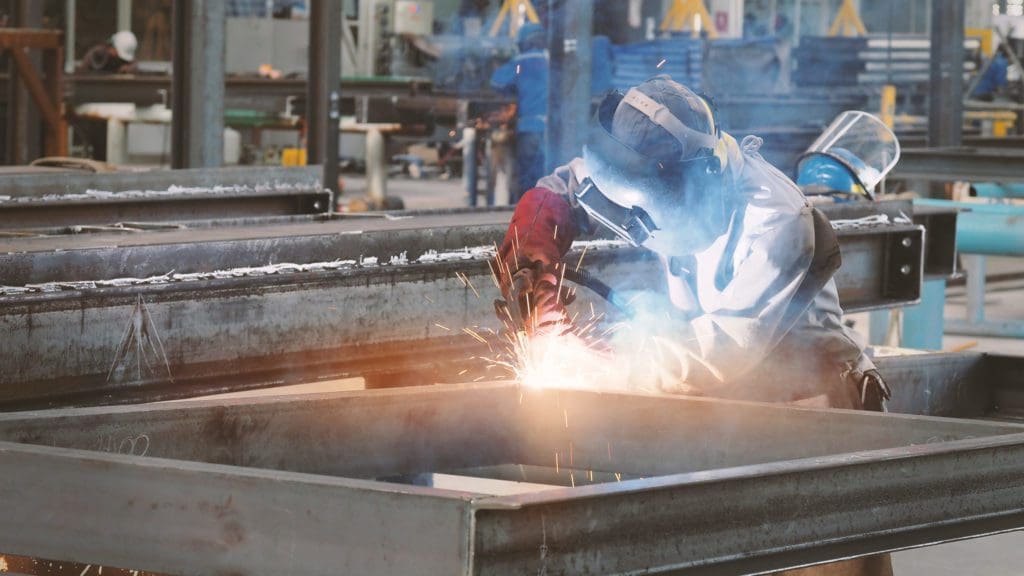Equipment breakdowns in your organization can lead to costly repair or replacement along with extended downtime that eats into your revenue. Cold spray coatings are reshaping repairs to reduce or eliminate downtime and provide several other benefits to companies.
VRC’s Cold Spray System delivers customized cold spray coating process solutions to keep your equipment running smoothly and reliably. Our system is easy to learn, mobile and effective on most machinery. Contact us today for your quote.

A Brief Introduction To Cold Spray
Cold Spray Definition
Also known as “supersonic particle deposition” (or SPD), developers refer to this groundbreaking solid-state materials deposition technology as a repair method for applying metal to rebuild the surfaces of corroded and worn-out parts.
This additive manufacturing system builds up and repairs the metal’s surface without creating a heat-affected zone, which occurs during welding or other melt-based high-temperature thermal spray repairs. The deposited material is accelerated in powder form to supersonic speeds. When the particles hit the part you are spraying, they are severely deformed, and also deform the outermost “skin” of the part. This deformation disrupts the grain structures in the particles and the part. The grain structures spontaneously re-form, promoting a very strong metallurgical bond. This also happens within the deposit when follow-on particles arrive, resulting in a deposit that is strongly adhered to and has high mechanical strength.
Cold Spray History
Scientists first developed the cold spray coating process in the mid-1980s at the Russian Academy of Sciences. It wasn’t until the late-1990s; however, it was first patented in the United States.
It then garnered the interest of national labs, aerospace manufacturers, and the U.S. Department of Defense. Now, after 30 years of research and development, cold spray is solving real-world problems that previously seemed impossible.
Alternatives To Cold Spray Repairs
Weld Overlay
Welding is mostly performed by melting a region of the pieces to be joined together along with a metal filler. When these solidify together you have a solid fused bond, with a distinct “joint” with a heat-affected zone around it. Weld overlay (or weld cladding) works very similarly but is used to put a layer of material on a part instead of joining parts together. Unlike welding, with cold spray, you don’t need to melt materials to join them together. The materials “join together” by kinetic energy!

Thermal Spray Repairs
Thermal spraying techniques are metal coating processes in which melted materials are sprayed onto a surface.
Unlike a thermal spray, cold spray technology is ideal for restoring damaged industrial parts and components.
Cold spray repair does not cause thermal stress or distortion which damages fragile parts. This sets it apart from both traditional welding and thermal spraying.
How Is Cold Spray Reshaping Repairs?
# 1 – Extending The Life Of Machines
Cold spray repair technology may be an ideal method for restoring damaged metal parts and components in industrial equipment. Cold spray can itself be repaired by cold spray; so, if needed, repair professionals can apply it over and over again as parts wear.
Replacing worn-out or damaged metal equipment presents challenges for companies. Extending the life cycle of equipment is the goal of any Operations Manager or COO.
# 2 – Restoring The Damaged Part To Original
With cold spray repairs, technicians can restore the damaged part to the original blueprint dimensions.
As a result of the lower temperatures, the metal substrate and the metal particles experience reduced oxidation. Surface oxides are blasted away by the impacting particles.
Another plus: The metal doesn’t shrink much after the application as it cools, unlike molten materials that solidify after high-temp thermal spray and weld coating processes.
# 3 – No Heat-Affected Zones
Unlike welding and many other high-temperature repair processes, cold spray repair is efficient and does not cause thermal stress. This lack of thermal stress also prevents further damage to fragile parts.
As we noted above, the cold spray repair process does not change the coated base materials. During the repair process, all materials stay in their solid state instead of the physical transformation occurring with high heat (i.e., melting).
Cold spray can preserve the spray particles’ metal composition, bond size, and substrate surface.
# 4 – Saves Time
Replacing manufacturing equipment often means significant downtime for your production line, repair services, or other industrial applications.
Because this technology eliminates steps from a conventional high-temp restoration process, the repairs can occur in much less time. There is no need to preheat parts to be repaired, even big cast-iron engine blocks can be repaired at room temperature. This also avoids the need for the “cooling down ” part of the application. You can often get a “shoot-and-start-up” result from cold spray repairs.
# 5 – Saves Money
The cost of replacing or repairing equipment can be prohibitive and unexpected when a machine breaks down.
Adding a solid layer of high-performance metal material over the damaged part’s original material is an efficient way to improve equipment health and performance. Repairs can often be made on-site, and even with components in place.
Manufacturing entire pieces or machines from these specialty materials can be costly, making cold spray repair an excellent cost-saving option.
When your large equipment lasts longer, you save money in the long run, reducing large capital expenditures on new machinery. Besides, your production line or other services can enjoy more “up” time over the life of your equipment.
# 6 – Reduced Waste
Cold spray operators use a computer-controlled robot to manipulate the gun. Like 3D printers, the robot works with a 3D image of the part.
Engineers have programmed the robot to move in an optimal way to deposit the powder. With this optimal movement, it wastes less metal powder.
Also, there’s reduced waste thanks to salvaged defective parts and reclaimed field-returned parts.
# 7 – The Solution Is Portable!
Cold spray gun technology may reduce or eliminate the need to pull machinery off a production line or disassemble equipment to access the surface to be fixed or coated.
Cold spray guns are agile and can fit into various spaces while applying reliable bonds and coatings of precise thickness.

How Is VRC Reshaping Repairs?
VRC Cold Spray is reshaping repairs in a variety of industries.
The sectors we touch place high demands on the materials’ chemical, mechanical, and physical properties going into their equipment.
Since material fatigue and corrosion constitute a high-risk potential, VRC Cold Spray has been used to coat components subjected to high corrosion, erosion, and possibly high stresses. This enhancement makes high-performance functional surfaces and commercially viable repair methods more accessible than ever.
As a leader in the cold spray technology arena, VRC Metal Systems provides custom solutions for its customers, in addition to its mobile machines and on-site consultants. Providing solutions to many different industries, they specialize in:
- Aerospace
- Defense and military
- Engine remanufacturing
- Large equipment
- Liquid handling systems
- Shipyard
Manufacturers spend time making their equipment, so it is precise. But to repair it, when you heat the metal and then cool it again, it changes in the same way powder snow can become a sheet of ice after a warm spell. Cold spray takes care of the heat issue.
VRC’s Cold Spray System delivers customized cold spray coating process solutions to keep your equipment running smoothly and reliably. Our system is easy to learn, mobile and effective on most machinery. Contact us today for your quote.


